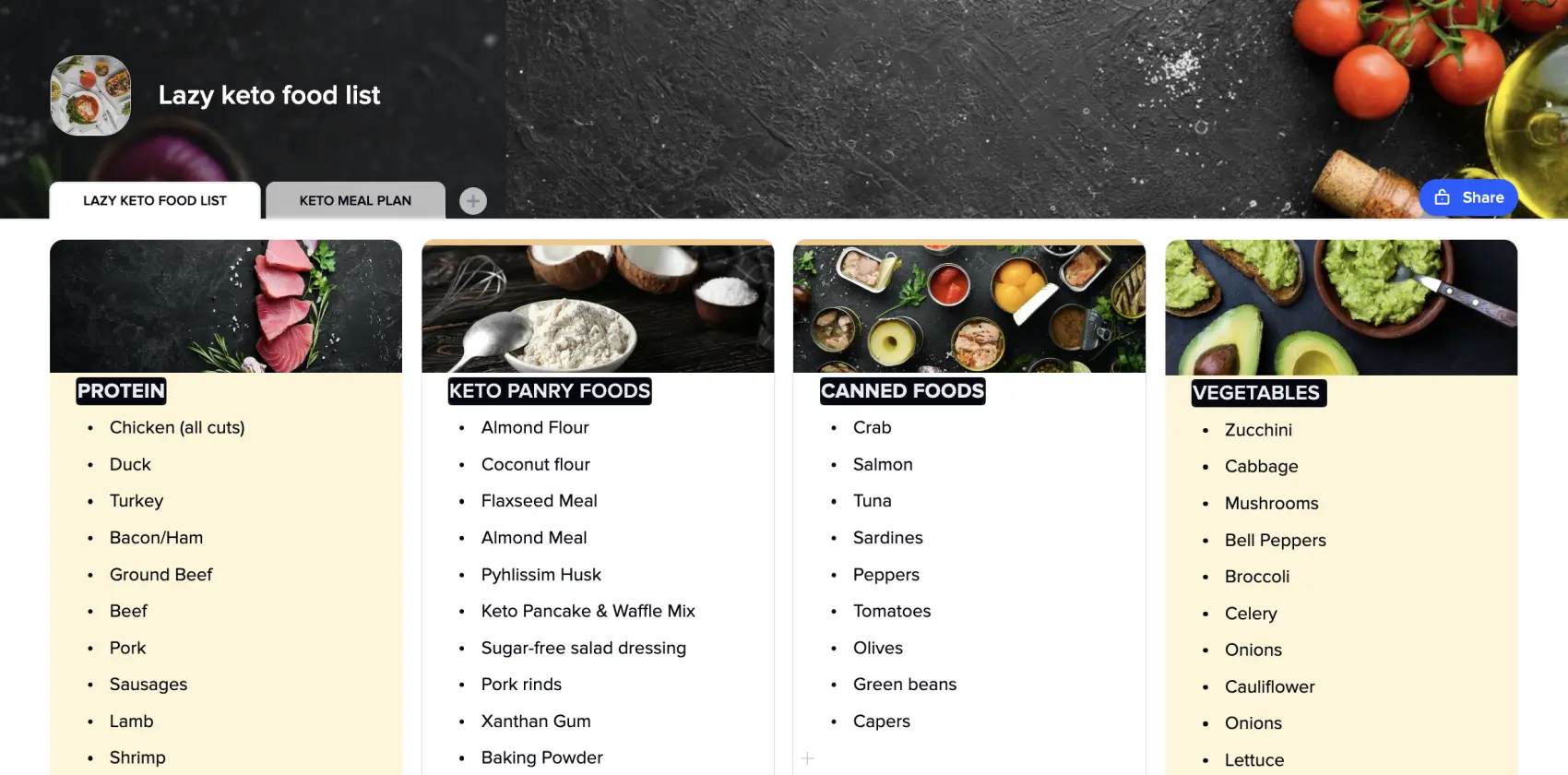Meal ideas
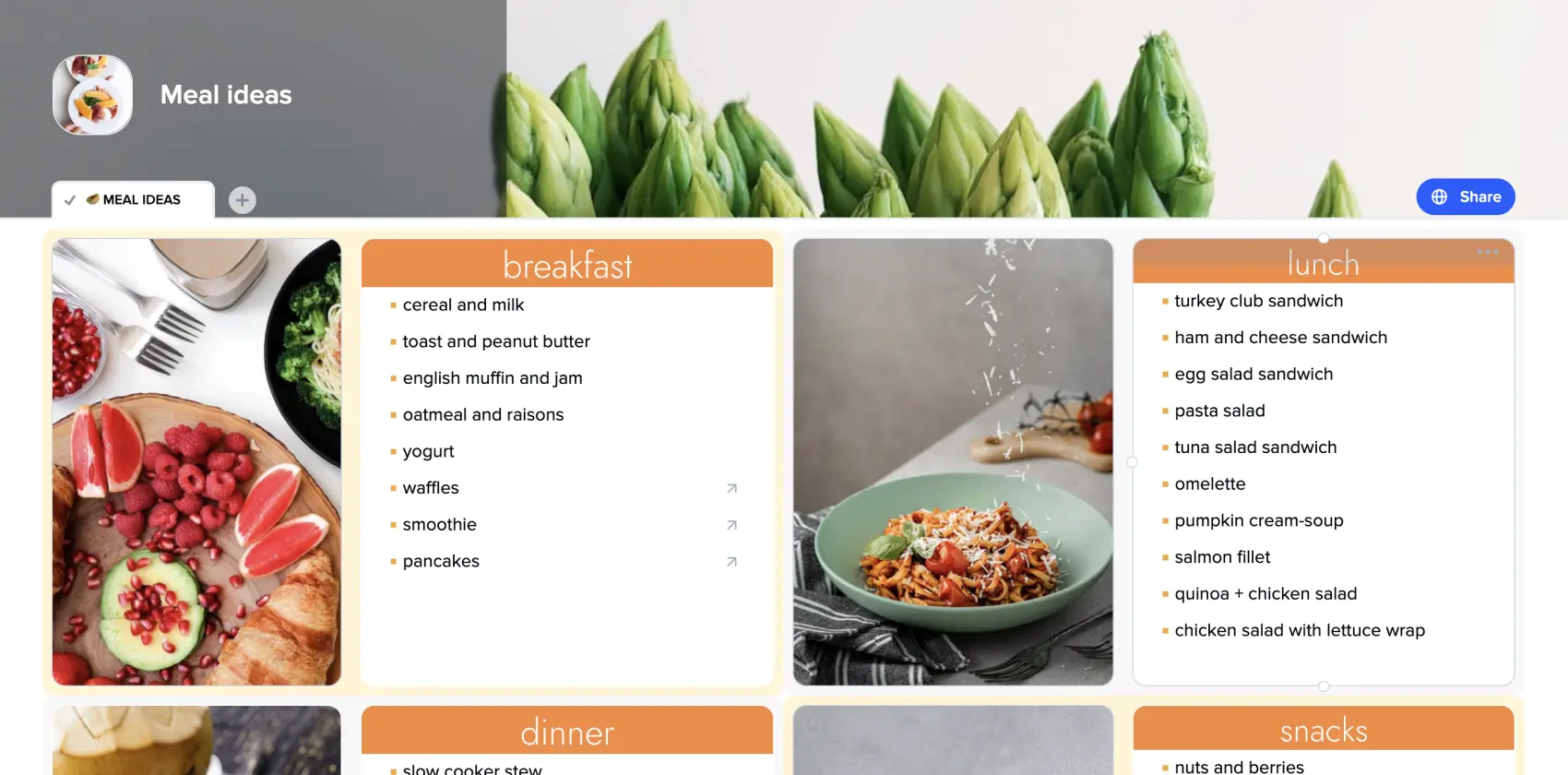

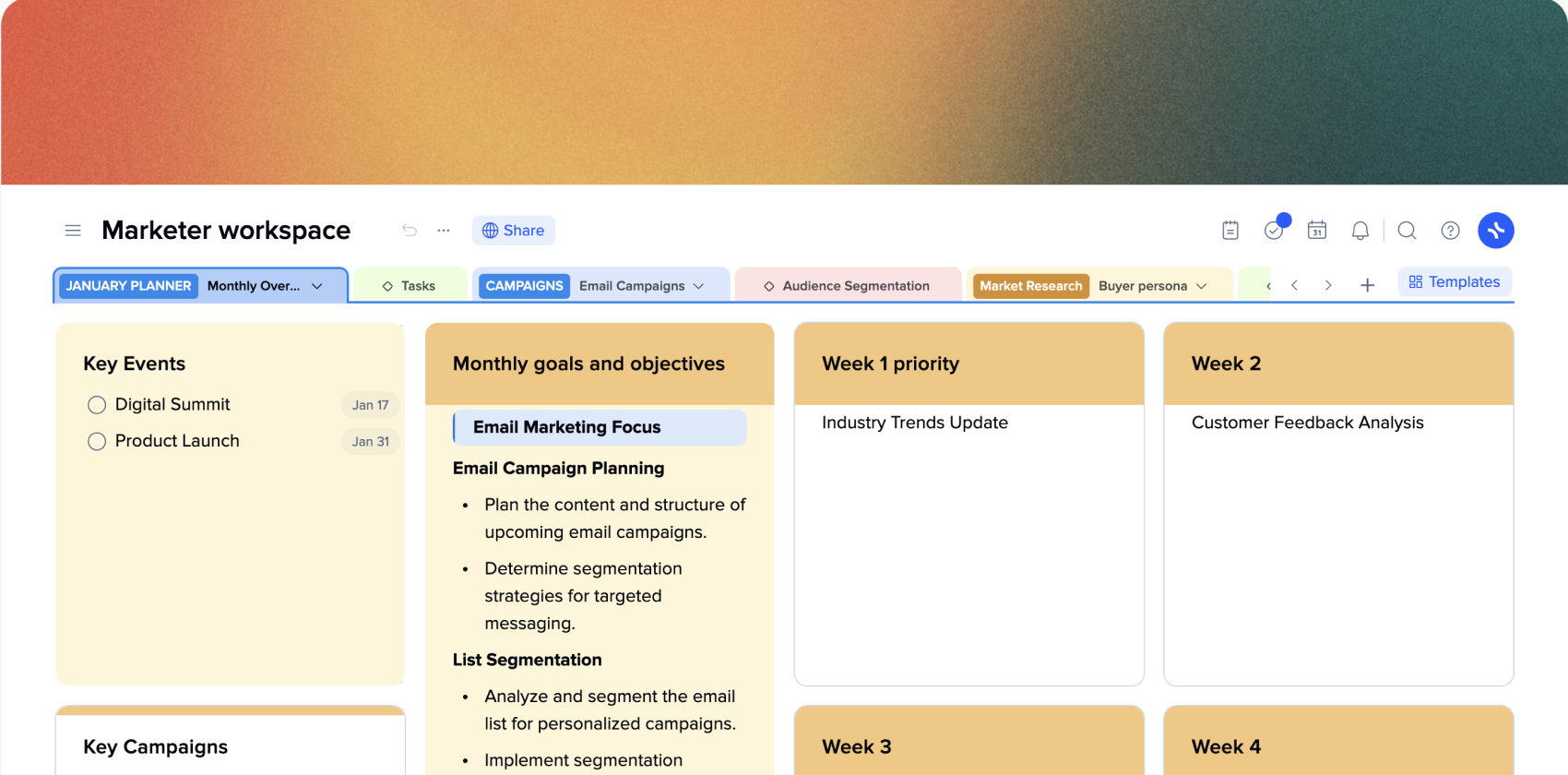
The path to success in marketing lies in proactive project management. Various studies show that marketers who adopt project management strategies are three times more likely to achieve favorable outcomes.
If your marketing team workflow is a total mess and your only thought is, “How to make it alive and sane through the next project?” then marketing project management in your team would use some improvement or revision. If everyone on your team is heading in a different direction, then your project management is insufficient. If you’ve lost in endless emails that lead to nothing and nowhere, if there are more meetings than a person can handle that only take your working time and leave you with nothing in the end, then your team needs to pause for a moment and think how to improve your current project management practice to deliver better results at a lower price.
Marketing project management software and templates will help you establish the process easier, make project management a part of the usual workflow without ruining someone’s habits, and coordinate your team within projects, especially if there are a few of them being executed simultaneously.
The xTiles Marketing Project Management Template offers a pre-designed framework to help teams work on their projects without missing any important details and deliver great results on time and within budget. Use it with our detailed guide on how to conduct your marketing project from start to finish to get the best possible results and provide your team with a healthy and inspirational workflow, which helps everyone achieve their best results.
Generally speaking, marketing project management is the process of planning, overseeing, executing, and delivering marketing-related projects. It consists of many elements, stages, and methodologies, all varying depending on the team or type of the project executed. Project management for a marketing campaign will differ from the one suitable for branding, branding for a lingerie company will differ from one suitable for a pottery studio, etc.
Many people believe project management doesn’t concern them unless they are project managers. However, the whole team is a part of the project management process and its stages unless they prefer to be stuck in a chaotic workflow, being constantly distracted and unable to resolve upcoming issues without stopping the whole project.
Typically, besides a manager, management of a marketing project involves an owner or stakeholders, team lead, or head of marketing who takes charge of the process and team members who work on the project. Additionally, project management is much harder, or even impossible, without marketing project management software.
By enabling transparent and logical planning and execution, project management becomes an essential aspect of marketing. It helps marketing teams to maintain control over the project’s outcome by establishing assigned stakeholders, measurable milestones, and a method to identify roadblocks.
When executed effectively, a marketing project plan empowers marketing teams to finish their tasks on time and within the allocated budget. Being a starting point for any project, it provides individuals with valuable insights into their task whenever they have doubts about whether their work aligns with the project’s goals or objectives. It becomes a reliable source of information on how the project is going on for a client who doesn’t have enough time to keep an eye on every detail, every discussion, and every brainstorming session.
Project management in marketing offers a couple of benefits for teams once they start using it on a regular basis for each of their projects:
Marketing campaigns require meticulous planning because every detail is important. Bad decisions regarding small tasks at the early stages of a project might have a serious impact during the late stages of the project.
Without a well-organized project management system and comprehensive marketing project management software, your hastily made decisions might become a snowball that becomes an avalanche when you are thinking about the finish. Implementing project management practices into your marketing projects can significantly ease them. With a comprehensive approach in place, transitioning from the planning stage to execution becomes more precise, increasing the chances of campaign success and saving you from the consequences of unfortunate decisions.
Constant evaluation of marketing campaigns is essential to measure progress, analyze returns on investment, and identify effective strategies. One of the most important parts of project management is learning from mistakes and successes. Your previous projects are key to your future success, but only if you extract valuable lessons from them.
Teams benefit from evaluation and reflection as well since it helps to find weak points and turn them into strengths and competencies. When team members are busy with tasks and trying to meet deadlines, reflecting upon the parts they’ve finished might seem like a time-consuming distraction. However, once the project is completed, individuals might become too relaxed to think about something that isn’t relevant anymore. That’s why analyzing your resources, notes, meeting minutes, project documentation, tasks, etc., will provide a bird’s-eye view of the entire marketing campaign, making tracking and evaluation more streamlined.
Effective collaboration and communication among marketing team members are crucial for success. Remote teams need to pay even more attention to establishing open communication and discussion within their team as many aspects become hidden for those who are separated by distances or time zones. Also, team members from different cultures might encounter difficulties in communication.
Project management fosters better chemistry and understanding among team members, providing transparency and leading to improved results from the beginning to the end of a project.
Marketing campaigns require substantial financial resources, and proper budgeting is vital to ensure smooth operations. No one would want to figure out in the middle of the journey that there’s no money to continue. That would make all the efforts and time people spend useless; some great ideas will stay unimplemented, and some people won’t get a solution to their problems, which your project might have brought them had it had enough money to be finished.
Marketing project management allows for accurate cost tracking and documentation, helping avoid overspending and utilizing every cent as effectively as possible to ensure the project and the people involved get the needed resources.
A marketing project manager’s role is multifaceted, adapting to the needs of the day and people. They are “Figaro here, Figaro there!” taking care of everything at once. An effective marketing project manager is a researcher, communicator, and marketing expert at the same time. Nevertheless, there are several key tasks that most marketing project managers commonly handle:
Project managers play a crucial role in clarifying the purpose and necessity of a marketing campaign. They ensure that marketing pushes are not driven solely by impulse but are instead aligned with specific outcomes.
Marketing project management involves dealing with numerous variables. PMs bring order to the chaos by defining the scope of work and project budget. They meticulously plan the details concerning tactics, duration, and necessary tools to execute the project successfully.
Project managers need to be proactive and attentive to maintain project schedules. Project managers often liaise between clients, C-level executives, and marketing teams to ensure seamless project execution. One of their key responsibilities is providing clear instructions to project participants, setting deliverable deadlines, engaging with collaborators and stakeholders, and establishing transparent expectations.
Meeting project deadlines within budget is probably the most important task for a project manager that is relevant across different fields and industries. They use different techniques to make this task come true.
Additionally, they must manage client expectations effectively, ensuring they align with the project’s potential.
Regular meetings, check-ins, and progress summaries constitute a significant portion of a manager’s schedule, enabling them to monitor project progress and make necessary adjustments to achieve successful outcomes.
During this initial phase, key project stakeholders collaborate to define and agree upon the project goals and objectives. Clear goals are crucial for establishing a project’s workflow.
A project manager’s main task during this initial stage is ensuring these tasks are manageable. By accepting tasks that can’t be finished under the given circumstances or budget, a manager plays a cruel joke with a team that will be working on a project and themselves who will be responsible for delivering the outcome that can’t be delivered in the first place.
The project manager plays a vital role in breaking down projects into manageable goals, objectives, and deliverables. A project charter is created, which serves as a blueprint for the project, ensuring alignment among all stakeholders.
If the goals were set without taking into account all aspects and current circumstances, it might render all the next phases of the marketing project management irrelevant. How far into the project do teams usually realize that something is wrong? It depends on many factors. However, being a project manager is also about being very realistic and level-headed or even grounded to avoid the euphoria that unreasonable optimistic ideas might bring.
With clear and achievable goals set, the team can establish the project’s budget and identify the deliverables. When the first stage is thoroughly thought out and discussed, you can move into the next ones with peace of mind. There’s little to be afraid of. Besides, it’s impossible to avoid all potential issues that a team might encounter throughout the project.
A detailed marketing project plan consists of multiple tasks that need to be executed. They may be grouped depending on the aspects and parts of the project. For example, visual components stay apart from textual content, and so on. It’s important to mark or separate the tasks if there are dozens of them to ease navigation throughout the project’s documentation.
You may divide the whole project into a couple of big steps, which, in their turn, will contain smaller tasks. Depending on the specification of your project, they may be executed simultaneously or sequentially.
All the tasks you set need to be allocated to team members based on their expertise and availability. Sometimes, leaving the choice to a team might cause disagreements, and tasks might not be assigned to the most skilled team members. That’s why it’s important to evaluate who will be better to perform each task on your own and be willing to make tough decisions when distributing tasks.
This phase marks the implementation of the project plan. Its duration depends on many factors, such as the budget, client preferences, the number of workers, etc. However, it has to be discussed before you start so that everyone has realistic expectations.
Project leaders outline task management expectations, track task progress, take necessary action to address any issues that arise along the way, and try to prevent potential issues and risks. Basically, a project manager helps guide the team to success, much like helping little turtles safely reach the water.
Visual tools like Kanban boards are employed to monitor the team’s progress, providing an easy-to-grasp overview of the campaign stages. Kanban boards enhance accountability and autonomy among team members, allowing them to work efficiently without excessive oversight.
Aside from using Kanban boards, teams can employ a variety of other approaches and techniques to achieve the desired results. You can integrate them directly into your xTiles Marketing Project Management Template or further enhance the process by creating additional documents or using other templates.
As the project progresses, monitoring its status and addressing any potential delays or obstacles is essential for smooth execution and on-time delivery. To be honest, this is a phase that is there always, whether you have your first meeting with stakeholders or whether you evaluate your work after successful completion.
Project managers must ensure that team members are meeting deadlines and finishing their assigned tasks using all of their talent and skills, enabling seamless communication at all times. It’s important to keep an eye on your team to inspire those who still perform their tasks without enthusiasm and help those who put in too much to stay on track and avoid burnout. By providing a comprehensive platform for updates, task assignments, and adjusting due dates when needed, a project manager helps all team members stay aligned throughout the whole project.
Project managers act swiftly to identify and intervene in case of any deviations from the plan. They are everywhere, yet they are not too nosy to scare people or make them feel uncomfortable about what they do.
The final phase involves the project’s culmination, which always varies depending on its nature, scope, and participants. You help your project get ready for entering the big world. This is where you make the final touches, address all the issues that have arisen (even those everyone left behind hoping someone else would resolve them or figure something out), and try to keep everyone’s focus on the project, even though they may be tired, bored, or exhausted after a long period of dedicating themselves to one project.
Delivery occurs when the project is successfully handed over to the commissioning stakeholder. However, in the case of retainer-based projects, an evaluation process takes place, encompassing client feedback and internal analysis. Tools like the xTiles Marketing Project Management Template facilitate the assessment of project timing, budget, and individual team member performance, enabling teams to define success and glean insights for future projects.
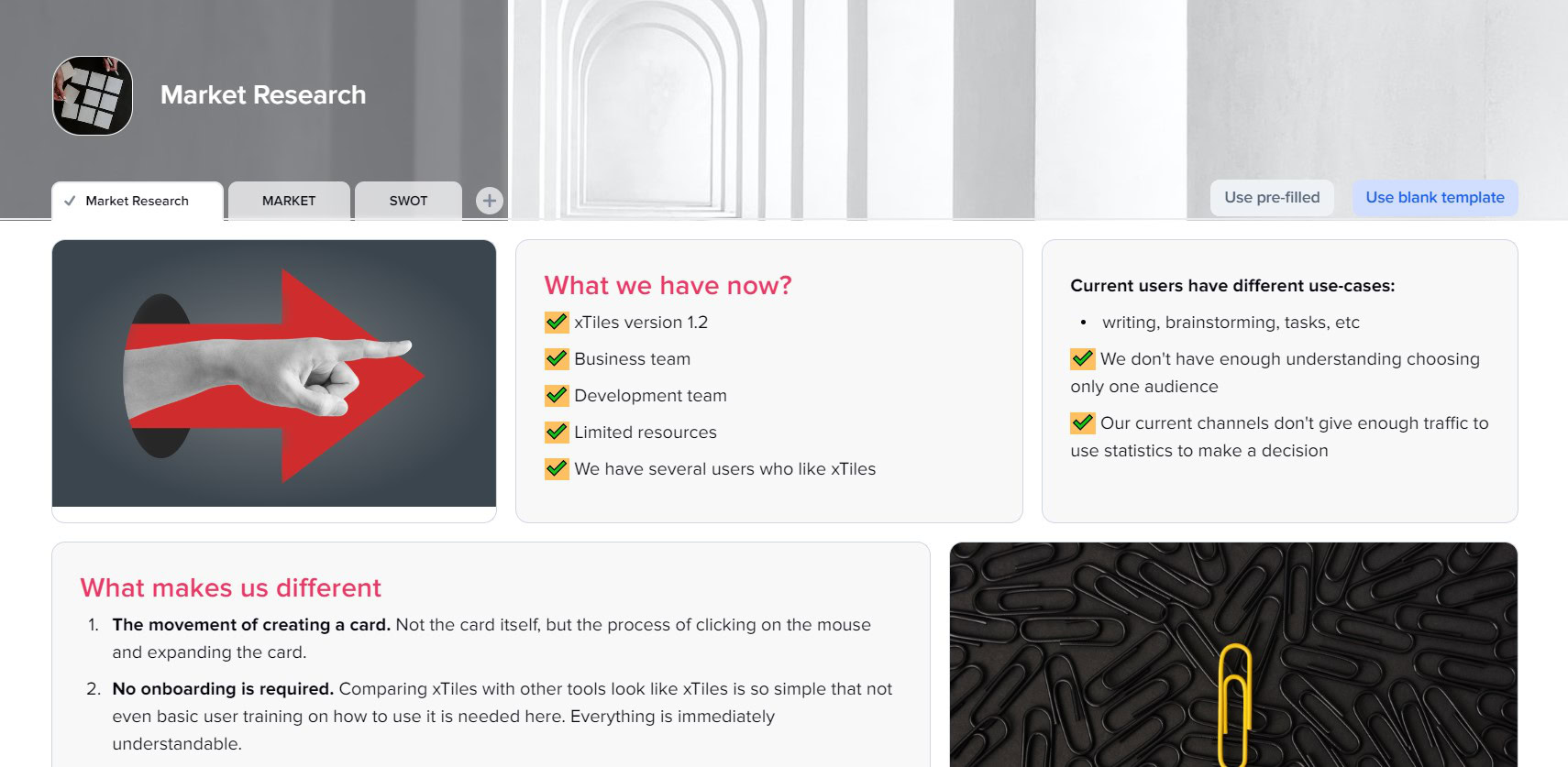
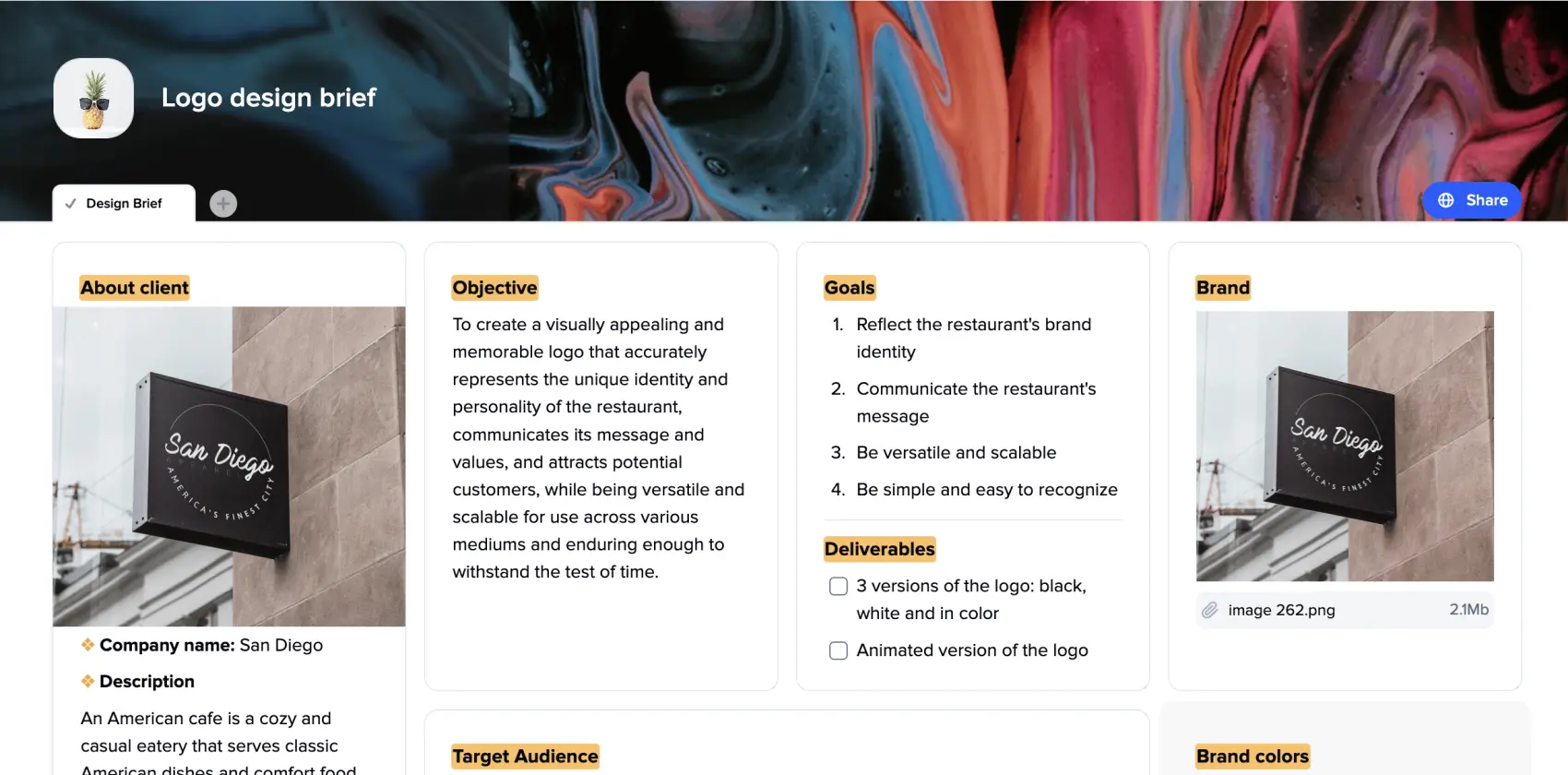
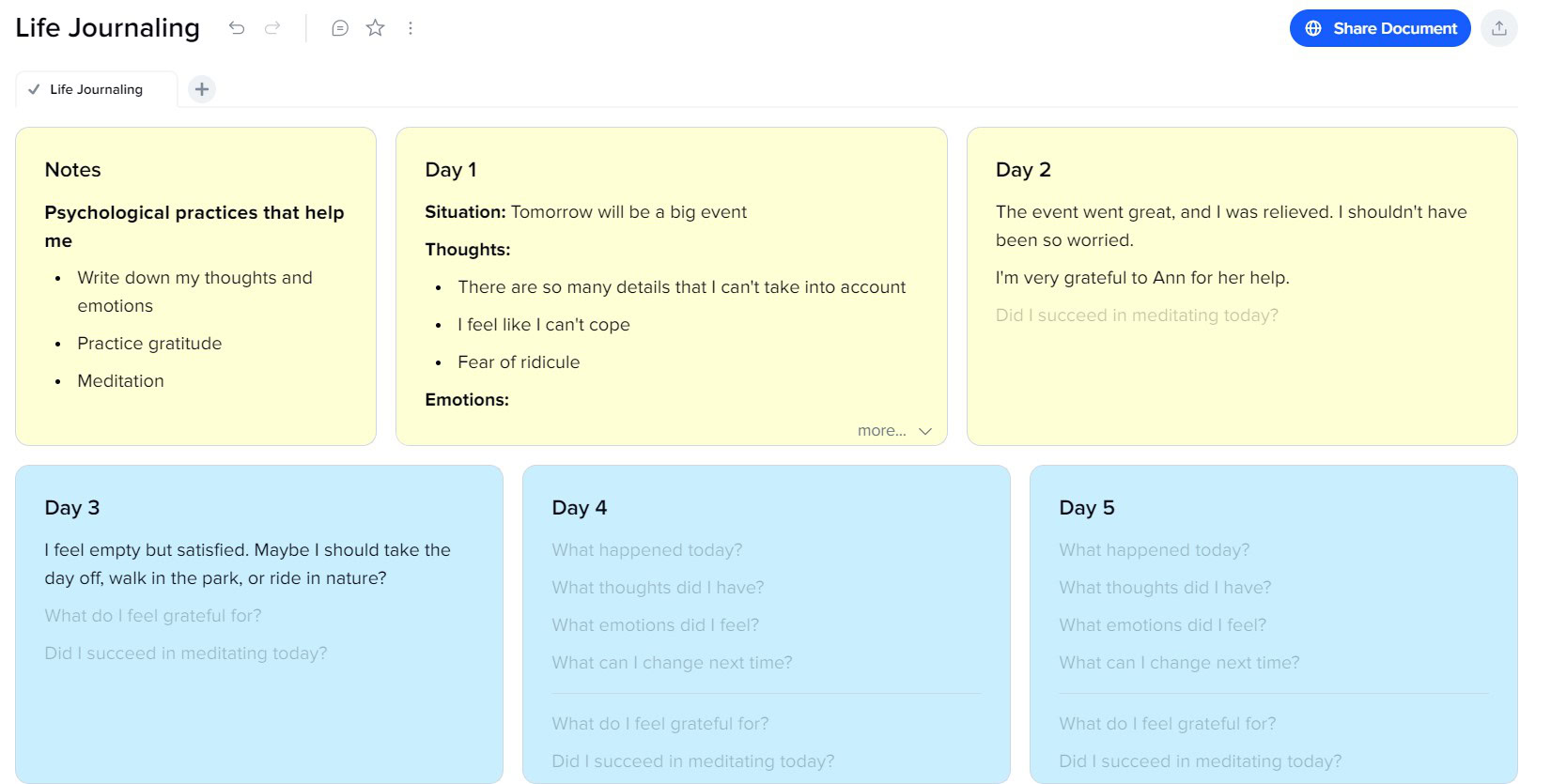
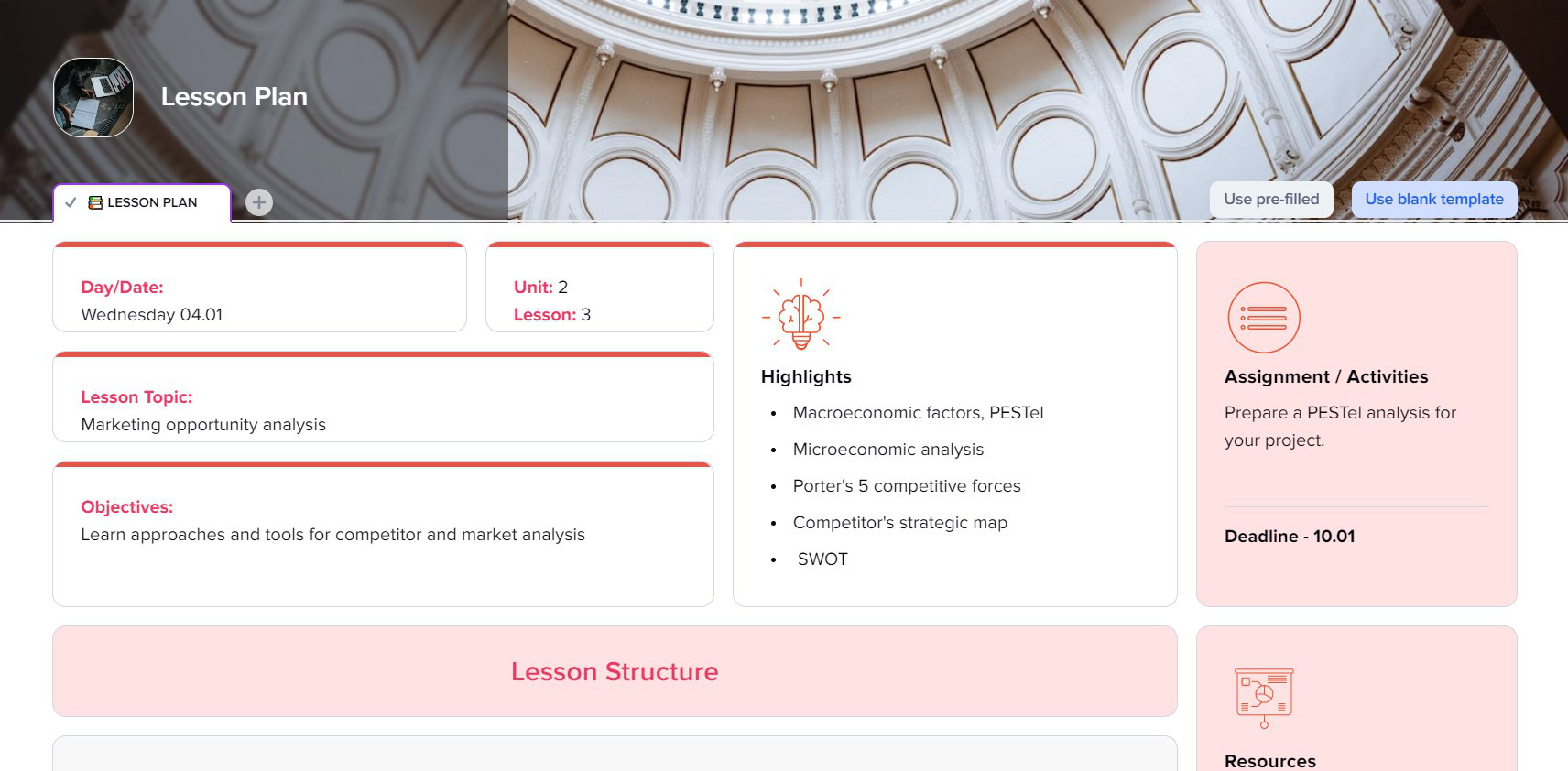
Being a teacher is hard and rewarding at the same moment. However, what if you could keep the “rewarding” part but eliminate, at least a bit, a “hard” part? Lesson plan templates are a useful tool that will save time and help deliver the information to your students in an easy and organized way without missing important details.
Have you ever seen “Dead Poets Society”? All the unorthodox teaching methods the Robin Williams character applied to help his students make their lives extraordinary have won the hearts of many young or future-to-be teachers or students.
By romanticizing a teacher’s routine, the film hides what is as necessary for a teacher as being inspirational – lesson plans and consistency.
Every comprehensive lesson requires previous research. Improvising should be a supportive tool, not the main one, if you want to present the information in an easy-to-remember way.
A lesson plan is a detailed document prepared by a teacher to map out everything that will be going on in the classroom during a lesson, day, week, etc. Its main purpose is to help teachers and students keep track of everything they are currently working on.
Teacher lesson plan templates are ready-to-use documents that allow you to write down everything you want to present in the classroom during a certain period of time.
If a lesson plan is here to save time and ease teachers’ lives, a lesson plan template multiplies the effect, saving even more time.
However, teachers aren’t the only ones benefiting from lesson plans. Your student will be able to better keep up with the topics you’re about to cover in a lesson.
Usually, teachers print their lesson plans and distribute them among their students or convert them into PDF files and share them with students via email or any other digital way. That’s why lesson plans’ appearance is important, and that’s where templates come in handy.
Also, lesson plans are suitable for students of different kinds and ages. For example, a kindergarten lesson plan template, or you may know it as a preschool lesson plan template, will help you arrange activities and study for youngsters in a way you can grasp and keep their attention.
First of all, you need lesson plans to keep you on track throughout the unit, academic year, or month. There is a lot to handle if you’re a teacher, and a lesson plan will make things easier to organize and structure.
If you’re a teacher, you are aware of how important it is to win your students’ respect. Without it, the chances you can teach them something will drop quickly.
Lesson plans probably aren’t the tool to win respect and hearts. However, they are definitely tools to keep it steady or growing. Imagine you decided to rely on your improvisation skills because the topic seemed too familiar and easy. And now, you’ve got lost in front of your class. What would be your reaction? What would be the students’ reaction?
Also, it’s crucial to understand that lesson plans are for everyone who delivers training. You don’t have to be a part of the academic community to enjoy the benefits of lesson plans and lesson plan templates. Remember that:
If a student takes a course only once (as a rule), teachers return to the same data every year. Having a prepared lesson plan saves you from having to research the topic every time you start teaching the course again.
However, you will need to check whether the information is up-to-date. Discoveries happen constantly, so providing your students with the latest data on the topic is important.
Free lesson plan templates are widely known and used. There are pre-made documents for anyone, no matter their specific needs. Most of these lesson plan templates are editable, so if you can’t find the one that suits your needs, you may turn a basic template into one you need.
Google Docs lesson plan templates are probably the most popular because everyone is familiar with Google Docs. However, they offer a short list of options for editing and visual layout.
You may choose a basic editable lesson plan template for all your lessons, or you may get a specific template that suits your needs. For example, there are edTPA lesson plan templates, SIOP lesson plan templates, 5E lesson plan templates, etc.
Also, you can choose the needed template depending on what period you plan your studying process. That is especially important for people who undertake self-study. For example, you can choose between weekly lesson plan templates or daily lesson plan templates.
Creating a lesson plan is easy, but creating an effective one is a bit harder. Here is a step-by-step guide you can use with our free lesson plan template to reach the best possible results for both parties of the studying process.
Will it be a plan for one lesson? Or maybe you want to prepare a lesson plan for a whole unit to save time creating many plans?
The answer will depend on your approach to teaching and the topic itself. Many teachers prefer to break down topics into smaller ones and create detailed plans for each. It helps students to focus on short-term goals.
However, some topics are very monolithic and unsuitable for splitting. In this case, you will need to prepare a plan covering the whole topic, no matter how vast it is, without missing important details and overwhelming your students.
Since your lesson plan is for organizing and structuring sake, don’t forget about formalities like date, the full name of the topic, which unit and lesson number it is, etc.
In the xTiles Lesson Plan Template, we put this data in the header of the future document, so it will be easy to find for you and your students whenever you need them, and it will be hard to skip when you start creating your plan.
Now, you need to identify the main objectives of your lesson. Here are three basic questions to answer to find the lesson objectives.
Concentrate on the benefits your students will get from attending your lesson and distract from the topic. This part of your plan is mainly about your students.
Try to divide your lesson into a couple of blocks, so the information won’t come as an unstoppable current. You may also plan some kind of small talk or share interesting facts regarding your topic between the blocks to eliminate tension.
If you lack organization, or there’s always not enough time, you may add time slots for each block to remind yourself to move faster or not be distracted by other topics or questions.
An empty space for notes is an important part of a lesson. Your students will take their notes and write down questions they need answers to, ideas, insightful information, etc., during the lesson.
How to sum up everything you’ve just learned and discussed? Continue working on the topic at home, finding additional information independently.
Assignments and homework are inevitable parts of learning, understanding, and remembering what was learned.
Your lesson doesn’t have to be all work and no fun.
You may add links to all the interesting materials regarding the lesson topic. We suggest adding videos to help your students mix different studying activities while working on their assignments.
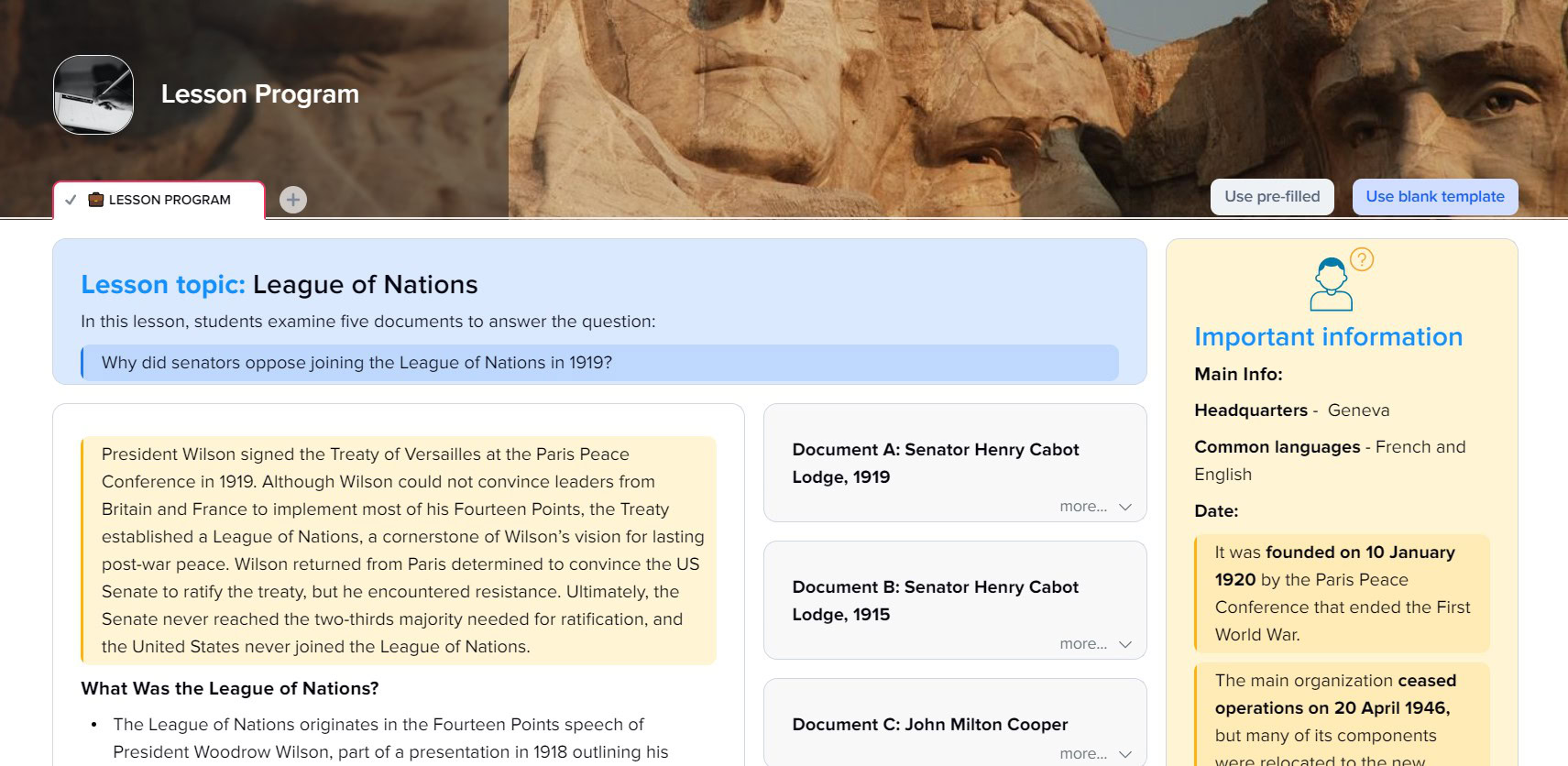
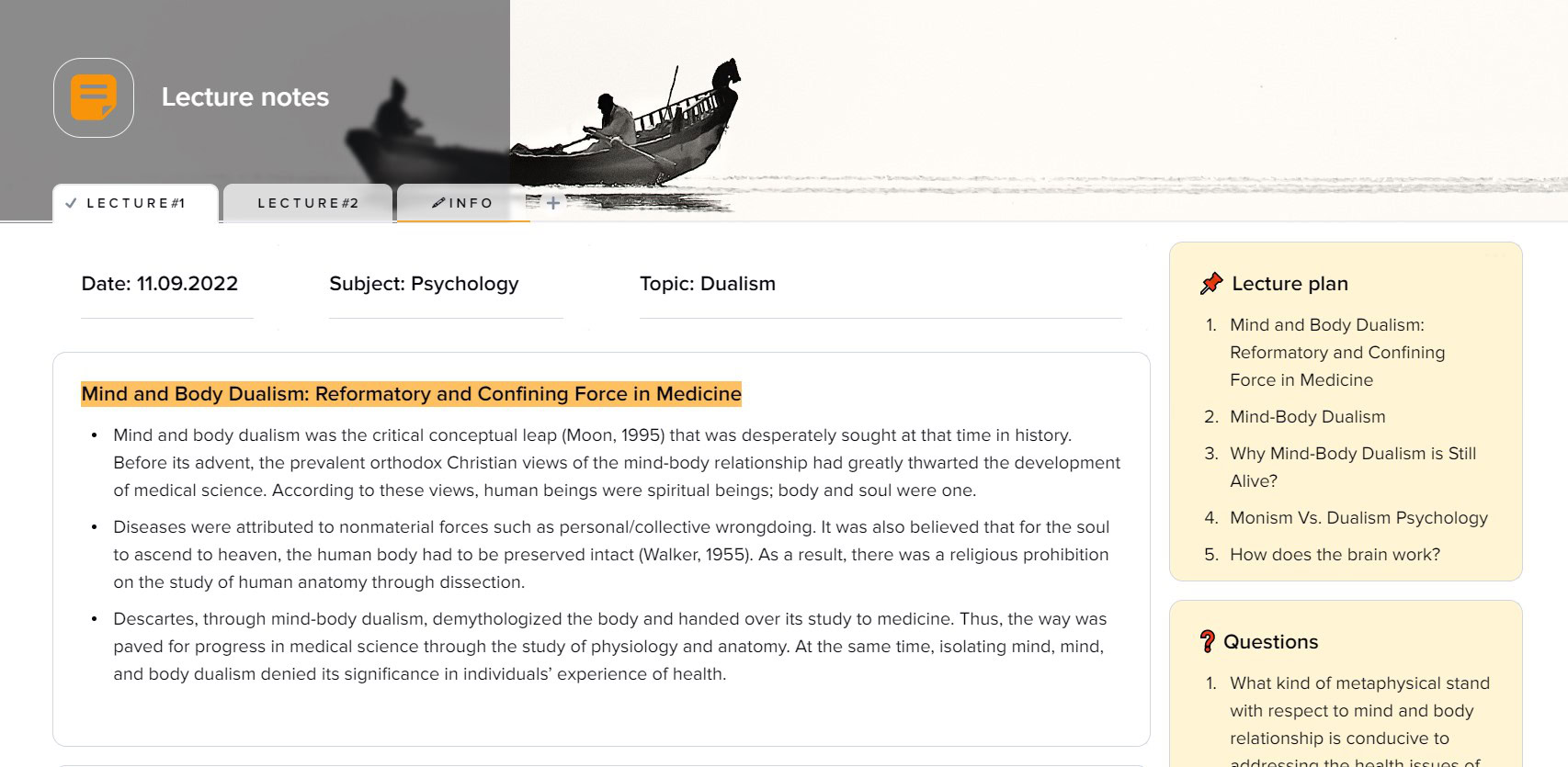
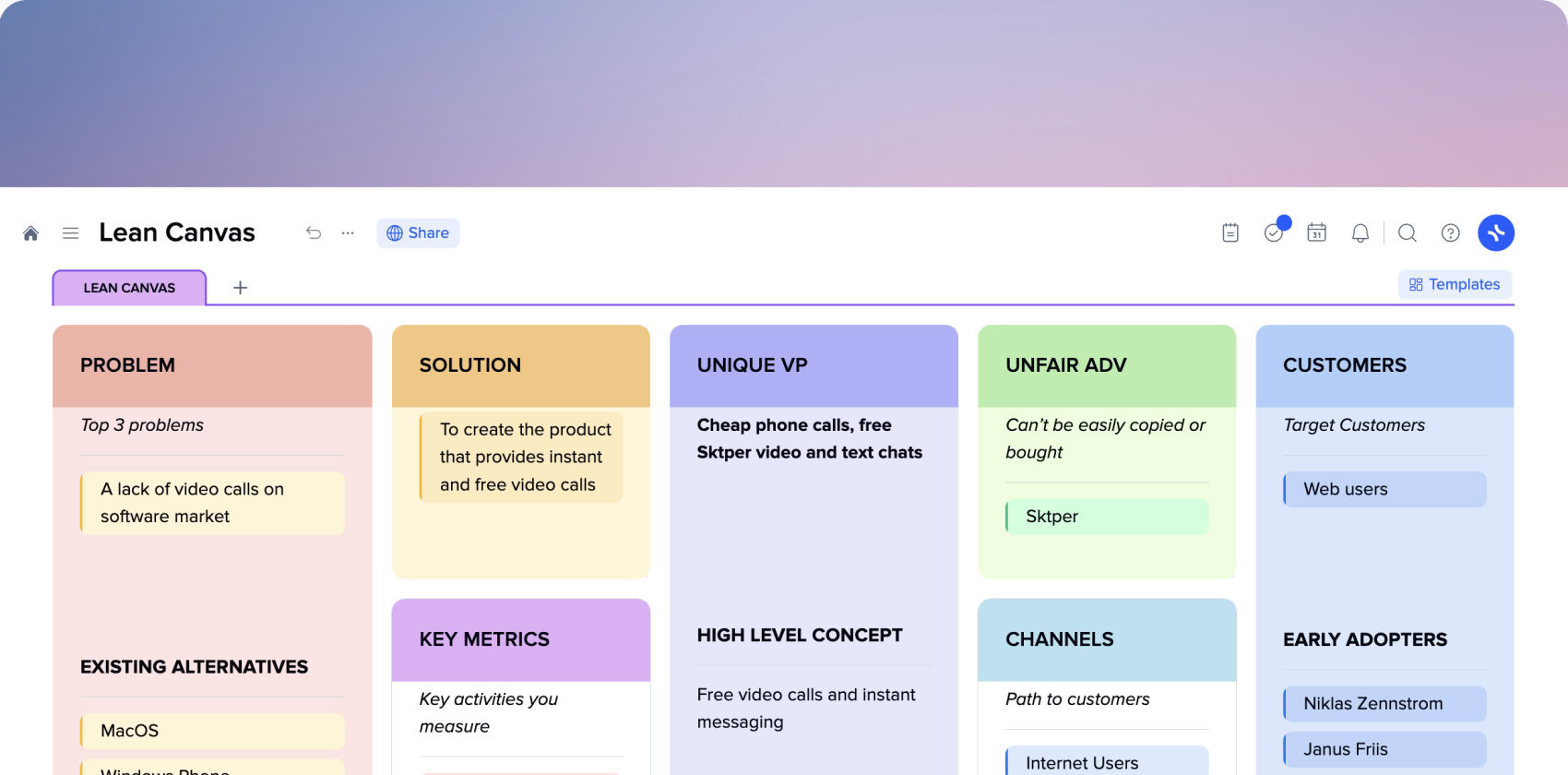
Your ideas should live elsewhere except your head, and a lean canvas is the best tool to extract and formulate them as a possible business model. It saves the time you usually need to present your idea to your stakeholders, boss, teammates, etc.
A lean canvas model’s predefined structure perfectly covers the most important elements of a business model in a well-defined and concise way to articulate your message.
If you ever felt like putting your idea or intent into words, pictures, video, or any other type of expression tools is not enough, a lean canvas template will help you.
The xTiles Lean Canvas Template is a powerful tool with the visual and content potential to showcase your idea in the best possible light and the ability to tailor the structure according to your idea’s specifications. Additionally, it saves time and resources by clearly identifying where they are needed and what is irrelevant or not important.
We offer you a ready-to-use Lean Canvas Template, a detailed step-by-step guide on how to create your own, and a lean canvas example to help you.
The lean canvas provides a framework to articulate the key elements of a business model in a concise and structured way. It’s a one-page document where you brainstorm key aspects of your potential business, startup, project, etc. You get the ability to showcase your ideas without spending too much time on creating a traditional business model.
A Lean Canvas was developed by Ash Maurya as an adaptation of the traditional Business Model Canvas created by Alexander Osterwalder. Both of these documents use the same nine blocks, except the lean canvas’ structure is slightly changed to be more time-effective and easier to use.
If there was some kind of competition, Lean Canvas VS Business Model Canvas, the lean canvas would probably finish a bit faster because it’s more user-friendly for people with no or little experience managing businesses or startups.
As a rule, a lean canvas is usually used in the early stages of a startup to validate a business idea. However, it’s perfectly suitable for being applied later to refine an existing business model.
A lean canvas helps entrepreneurs with many aspects of representing and articulating their ideas:
The list of cases when one may benefit from using a lean canvas model isn’t long, yet its narrow specification fully identifies and represents the main points of a new idea or business that is being developed. Entrepreneurs and startups use a lean canvas to outline a clear and concise plan for bringing their idea to market successfully.
Here are some of the most popular examples of when using lean canvas is beneficial:
The first steps may be the hardest as you need to understand where to move, what your business or product will be about, who may become your audience, etc. A lean canvas helps to clear all of these aspects and gives you a push to start active work.
When your business or product is not performing as expected yet, there’s no obvious reason why it is so. In this case, a lean canvas will help you to identify what needs to be changed. Usually, it happens if a lean canvas is skipped during the first stages of a project.
Launching a new product requires almost the same actions as starting a new business. A lean canvas will help you outline your product value proposition, find out who is your target market, etc.
You may have many ideas, but analyzing each of them in detail using a traditional business model canvas to learn whether it’s going to work or not will take time. A lean canvas is a much more time-effective tool for the same purpose.
Lean canvas 9-block structure is the step-by-step guide on what you need to find out. Once you complete the last of them, you will have a clear and highly-representative lean canvas of your business or startup model.
What problem do you want to solve by starting your business? Your starting point is someone’s problem, so be very specific and don’t try to resolve all the troubles people may face. The answer will help you determine the focus and direction of your lean canvas.
If there’s a problem, there must be a solution. At least in the business world. Your solution is what will bring you success. You may not come up with a solution straight away. Sometimes it takes many brainstorming sessions and interviews with existing or potential customers.
Even if your business is very small and there’s no one except you and your friend in your parent’s basement or garage, it still will have some key metrics to monitor performance. Key metrics in the lean canvas will help you soberly assess your progress.
What is so special about your business or startup? What will be the unique value that it is offering to your customers? For example, that may be an entirely new product or service, a better customer experience, or a more affordable price schedule.
That is something no one of your competitors possesses and barely can get. It will help you to find partners, investors, involve more professionals, etc. Sometimes, these advantages are imperceptible for teams, and they leave this block empty.
New technology, dream team, information no one in the field possesses, current customers, etc., may become your unfair advantage.
Now that you know from what problem you’re going to save the world and its solution, you need to specify your target customer. You can’t think about your potential audience separately from the problem. Their connection is highly important for a clear and true understanding of your further moves.
At first, not all potential channels may be available to you. That’s why it’s also important to concentrate on what will help you reach them in the future. Another important aspect is that you need only those channels where your target audience is. Don’t waste your time and resources on channels that have nothing in common with your potential customers and your business or startup.
That is the most technical part with lots of bureaucracy, yet very important for a successful launch and establishing an effective workflow. Identify the costs associated with running your business, such as team salaries, equipment, marketing and advertising expenses, etc.
Many startups die at early stages because the operation costs weren’t taken seriously. If you want your dream to exist, develop, and bring your dividends, you need to take care of its prosaic aspects.
What will be the ways your business or startup will generate revenue? Sales? Subscriptions? Advertising?
The exact way will depend on your business model. Some startups choose to offer their product or service for free to gain audience attention.
